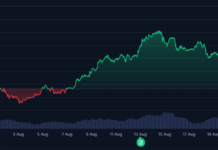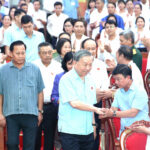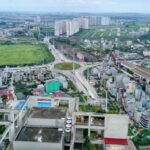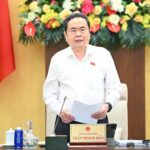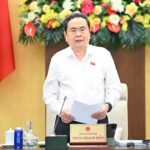On the morning of October 2, the National Assembly delegation of Ho Chi Minh City’s Unit 3 held a meeting with constituents from Chợ Quán, An Đông, Chợ Lớn, Chánh Hưng, Bình Đông, Phú Định, Hoà Bình, Phú Thọ, Bình Thới, and Minh Phụng wards.
The delegation included Mr. Lê Minh Trí, Chief Justice of the Supreme People’s Court; Mr. Nguyễn Tri Thức, Deputy Minister of Health; and Mr. Lê Thanh Phong, Chief Justice of the Ho Chi Minh City People’s Court.
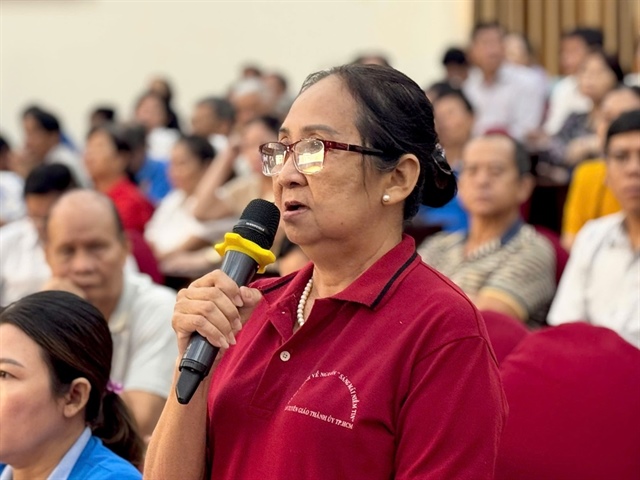 Constituents voicing their concerns at the meeting. Photo: BẢO PHƯƠNG |
Constituents Call for Specialized Courts
During the meeting, constituent Đặng Văn Rành (Minh Phụng Ward) urged the Supreme People’s Court to review land-related litigation cases to ensure the revised Land Law better reflects reality. He also advocated for the establishment of specialized administrative courts to efficiently resolve land disputes.
Additionally, Mr. Rành suggested creating specialized courts for administrative matters, intellectual property, and bankruptcy. He emphasized that complex administrative cases require courts to operate with efficiency, objectivity, and legal compliance, urging the Chief Justice to propose this to the National Assembly Standing Committee.
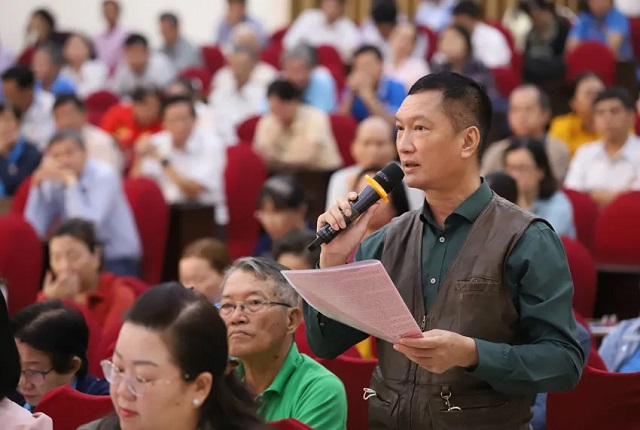 Constituent Mai Thanh Hà (An Đông Ward) sharing his views. Photo: BẢO PHƯƠNG
|
Constituent Mai Thanh Hà (An Đông Ward) mentioned filing 20 complaints against former and current officials in several agencies and localities, calling for accountability. Constituent Mạc Kim Hồng (Chánh Hưng Ward) highlighted the rapid growth of social media but noted the spread of misinformation, causing public concern. He urged stricter enforcement of the Cybersecurity Law and the appointment of qualified moderators to counter false information.
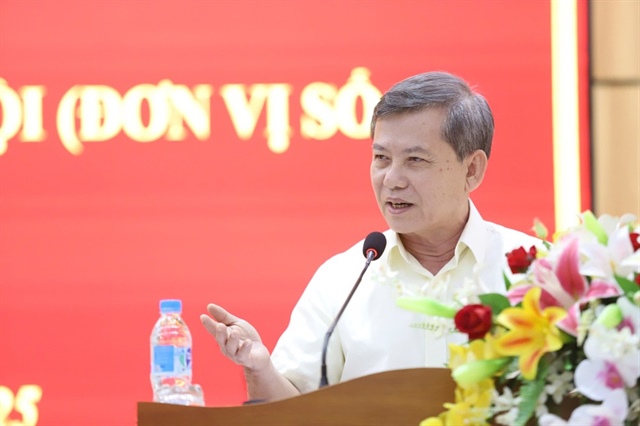
Chief Justice Lê Minh Trí addressing constituents. Photo: BẢO PHƯƠNG |
Continued Revision of the Land Law
In response, Chief Justice Lê Minh Trí stated that local issues would be referred to relevant authorities, while national matters would be raised in the National Assembly. Regarding the 2024 Land Law, he noted that the Politburo has directed further revisions to address practical challenges, particularly defining land ownership as belonging to the people but managed by the state.
“The state will regulate land prices to ensure efficient, fair, and reasonable use. The revised law must address real-world needs, as most disputes—civil, administrative, and criminal—stem from land issues,” he stressed, emphasizing the law’s role in protecting citizens’ rights and fostering socio-economic development.
On cybersecurity and online fraud, Mr. Trí mentioned the passage of the Advertising Law at the 9th session and the upcoming Cybersecurity Law at the 10th session, which will merge cybersecurity and information safety laws. He expects the new law to balance internet benefits with stronger controls to protect citizens and the state.
Regarding specialized courts, he announced plans for bankruptcy courts in Ho Chi Minh City, Da Nang, and Hanoi, and intellectual property courts in Ho Chi Minh City and Hanoi. He also highlighted efforts to establish a specialized court in Ho Chi Minh City’s International Financial Center, a move toward international integration.
Chief Justice Trí thanked constituents for their constructive feedback, stressing the importance of acknowledging progress while addressing shortcomings for national development. He encouraged collective efforts in building a prosperous nation.
BẢO PHƯƠNG
– 12:19 02/10/2025
Proposed Land Price Schedule and Adjustment Coefficients Effective January 2026
The Ministry of Agriculture and Environment has recently proposed a land price framework to address challenges and obstacles in the implementation of the 2024 Land Law.
Letting the Market Reign: How Land Prices Drive Housing Costs and Vice Versa
According to the Chairman of the Vietnam Association of Construction Contractors, the 2024 Land Law stipulates that land prices are determined by market mechanisms. However, if the market is left to decide entirely, the state will struggle to control prices, leading to an endless cycle where “land prices chase housing prices, and housing prices rise with land prices.”

























